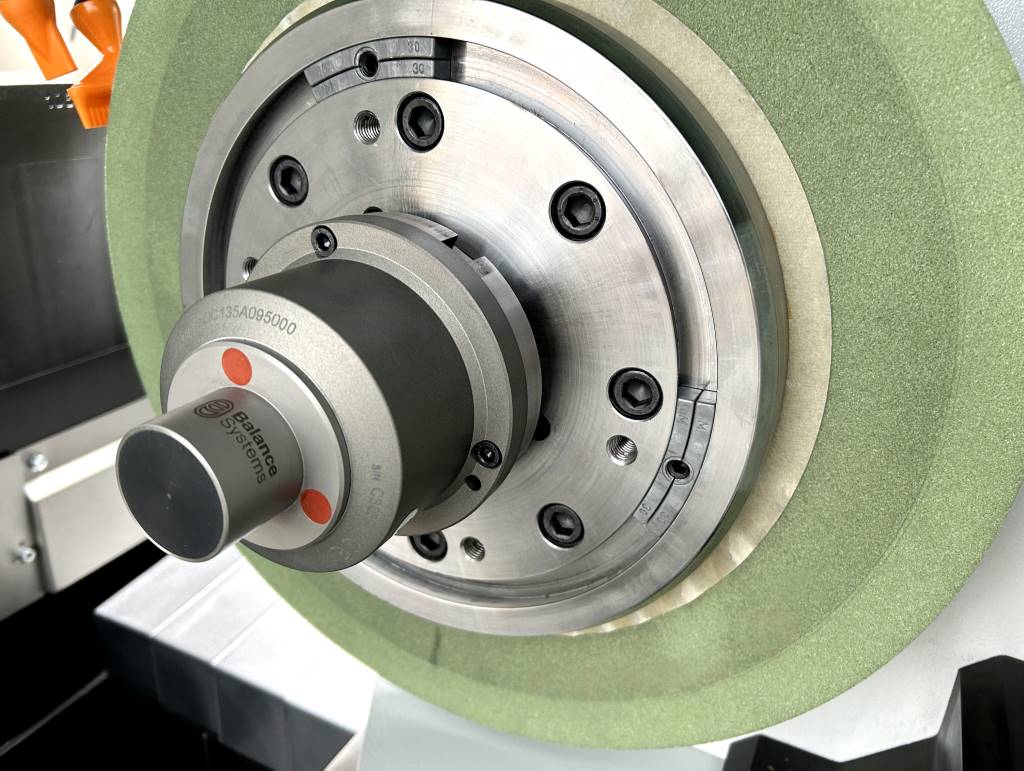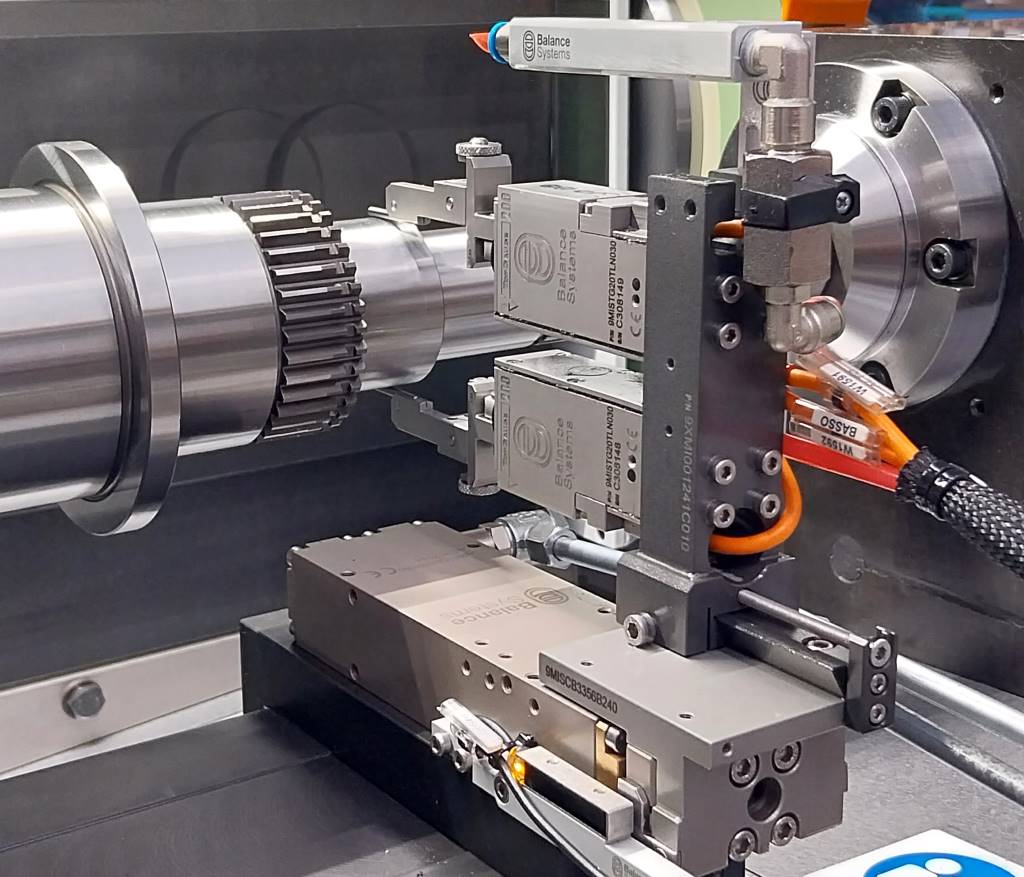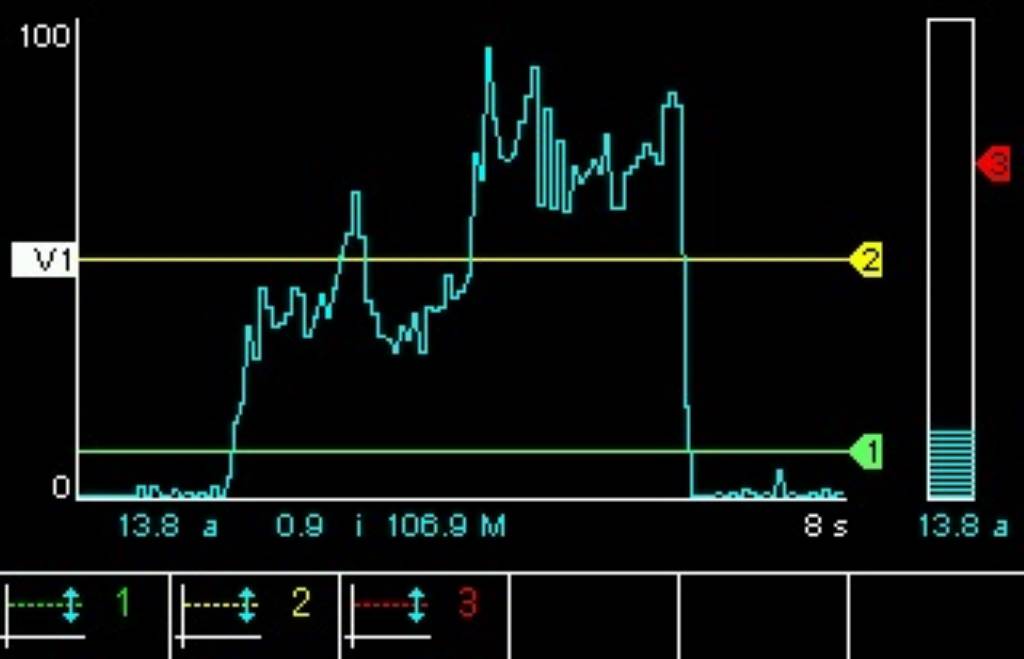Taking a balanced approach to grinding optimisation

At MACH 2024, Leader Chuck International will present the latest innovations from its Italian partner, Balance Systems, developed to expand the company’s range of retrofit solutions for grinding and dressing process optimisation.
A team of experts will be available to discuss visitors’ needs and describe the benefits deriving from the implementation of these new technologies in machines already in operation.
For more than 40 years, Balance Systems’ mission has been to provide customisable and easy-to-integrate solutions to optimise almost every grinding and dressing process, allowing the end user to be more competitive by reducing production and maintenance costs and improving the quality of machined parts.
Whether gear, cylindrical, centreless, surface, profile or special purpose, grinding machines are usually the last step in the manufacturing process. They support the most precise geometric characteristics of the part: from dimension, profile, flatness, circularity, cylindricity, conicity, as well as good surface finish. This is why it is important to preserve machine qualities and whenever possible increase their performance.
A few examples of grinding machines upgraded by Balance Systems include AZ, Buderus, Danobat, Earlsdon Technology, Estarta, Favretto, Ger, Holroyd, Jones & Shipman, Junker, Landis, Matrix, Palmary, Robbi, Rosa Ermando, Reishauer, Samputensili, Schaudt, Studer and Tacchella.
“Modernisation can increase the profitability of your old grinding machine,” explains Mark Jones, managing director of Leader Chuck International. “There are three significant reasons to consider ‘retrofitting’ your grinding machine: balancing, touch detection and gauging.”

Balanced operation
Any experienced grinding machine operator knows the negative effects of grinding wheel unbalance on the surface quality of the workpiece. During turning, especially at high speeds, this unbalance generates undesirable vibrations on the spindle with subsequent irregular machining of the workpiece.
Additionally, spindle bearings, slide rails and ballscrews are directly affected by this vibration causing a potentially reduced service life of the grinding machine.
Only real-time monitoring and balancing (pic 2) of the grinding wheel in the machine can significantly improve the quality and stability of the grinding process. Balance Systems has developed moment-free balancing heads (patented symmetric design), to offer both automatic balancing solutions for full integration into the machine controller and semi-automatic balancing solutions for machines without a PLC/CNC.
Making contact
Touch detection controls the grinding wheel-workpiece and grinding wheel-dresser contacts, by using acoustic emission and/or power sensors (pic 4). The most familiar application of touch detection is the Air Gap Elimination feature to reduce grinding cycle time.
This is achieved by moving the grinding wheel towards the workpiece at semi-fast speed until it detects contact to immediately switch to working speed. The same technique can be used to detect the contact between the grinding wheel and the dresser to fully automate the dressing process.
As an extension of touch detection, crash detection is a safety feature for both the machine and operator. Although machine tool operators know and appreciate this feature, it is not always properly implemented. In fact, most solutions are based only on acoustic emission technology (AE sensors). Although this technology is suitable for detecting the contact of the grinding wheel with the workpiece or dresser, it cannot always distinguish normal contact from a dangerous collision.
Balance Systems can simultaneously use an AE sensor and a power sensor connected between the motor drive and the spindle motor. The power sensor can accurately measure the intensity of the touch, allowing reliable discrimination between a normal touch and a collision, and avoiding unnecessary machine stops.

Reliable gauging
Using in-process and post-process gauging (absolute or comparative) can fully automate the grinding process through workpiece diameter measurement, geometric control and positioning functions to ensure consistent machining. Thereby increasing part quality and machine productivity. (pic 3)
Due to the very tight machining tolerances achieved, the measuring system must be reliable, accurate and suitable for installation in a grinding machine. Another important feature for small production batches is the ability to measure diameters from 5 to 250mm with a resolution of 0.1µm through a quick manual setup without changing equipment.
“Accuracy, versatility and reliability are the most important requirements for stable and optimal in-process measurement,” explains Franco Riva, UK market manager at Balance Systems. In addition to the well-known TG200 measuring heads, the new range of TGA absolute measuring devices enables in-process measurements to be carried out automatically without manual changeovers up to 1,000mm.
Finally, the new range of TGA absolute gauges allows multi-diameter measurement from 4 up to 400mm, without the need for any manual retooling.”

Safety checking
Also on display will be the latest features of the Italian company’s B-Safe System. Based on a miniaturised smart sensor, the B-Safe System expands spindles and machine tool diagnostics and protection through the continuous monitoring and analysis of operating vibrations and temperature. The use of a microprocessor with integrated memory allows the local detection and memorisation of collision, unbalances, overloads phenomena as well as machining anomalies, tool wear and bearings diagnostics.
Thanks to the wide range of available functions (including statistical and trend data, FFT analysis, spindle check-up, fingerprinting) the B-Safe System also becomes a valuable tool for the preventive planning of maintenance jobs.
Leader Chuck
www.leaderchuck.com
Hall 18, Stand 2














